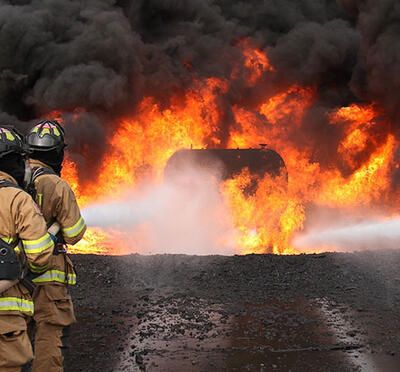In the fall of 2019, during the recently completed Merryfield Hall renovations, a plumber descended into a crawl space beneath the building to tap a water line for a new drinking fountain. He also found an odd bit of construction: a dozen concrete-filled barrels, aligned in two parallel rows, supporting a significant chunk of the building. The barrels, it turns out, had also been observed during a 2014 remodel of one of Merryfield’s labs. Who knows when anyone had seen them before that?
Using barrels as concrete forms doesn’t seem to have ever been a common practice, but it sure demonstrates an imaginative solution in a pinch. And though it’s uncertain whether the barrels were part of the building’s initial construction in 1909, there’s some pretty convincing evidence that they were added later.
“I can’t say for sure without inspecting them, but based on photos, the footings used underneath the barrels do not look like original construction,” said Chris Higgins, Cecil and Sally Drinkward Professor of Structural Engineering. “They’re not well excavated and the concrete is poorly placed. These would have been easy to make before the building was completed but hard to do in a crawl space.”
Another clue is the wooden shims wedged between the barrels and the support beams, which ensure contact between the two. “That also suggests they aren’t original, as the construction would have been cleaner if it had been done new,” Higgins said.
The provenance of the barrels is clear enough: Each is marked with the name J.B. [John Bazley] White & Bros., (originally J.B. White & Sons), once one of England’s leading manufacturers of Portland cement. Its enormous plant in Swanscombe, southeast of London, was the country’s largest cement production facility for more than 80 years, mostly during the 19th century.
A compelling reason the columns were needed can be seen in old photographs of the Mechanical Arts Building (Merryfield’s original name). The area above the barrels used to be a machine shop filled with heavy, vibrating equipment. “I think the barrels were added to suppress floor vibration and deflections,” Higgins said. “It’s common to add additional supports to carry heavier loads, reduce vibrations, or stop floors from sagging under load.”
Though no one knows when the barrels were installed, it’s certain that there are no plans to remove or replace them.




